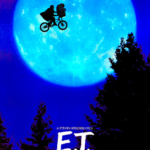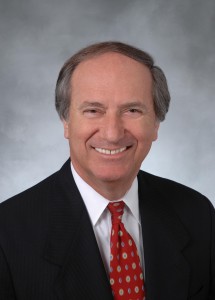When I asked to speak with Leslie Broecker I was told we’d get along as she was a fellow “theater nerd.” What an understatement. The President of Broadway Across America Midwest, Ms. Broecker lives and breathes theater. When we spoke she had just spent a whirlwind week in New York City, seeing EIGHT Broadway shows in seven days. Thank goodness for matinee’s.
Michael Smith: First off, please tell our readers what you do, how long you’ve been doing it and how I can apply for your job when you decide to retire?
Leslie Broecker: (laughs) Absolutely you can! I’ve been here 35-years. I started in the marketing department but I’ve loved theater my whole life. Really my passion has been in radio and television production, especially radio. And so I worked with the local Broadway series in Louisville (Kentucky) on some of their radio buys. That’s how the local company hired me as their marketing director. The company became so successful that it grew into Cincinnati, and then Columbus and Indianapolis. Ultimately our partner, which was Pace Theatrical Group, purchased our company and that is how Kansas City became part of my responsibilities as well.
MS: How do you go about choosing what shows go to which city? Is it just a national tour of certain shows or do you pick specific shows for specific cities?
LB: The tours are tailor made for each city. It’s a jigsaw puzzle of what shows are available, what dates are available in the theaters and then trying to marry those. We are very reliant on our neighbors and friends that present in other cities in order to make routing reasonable and responsible. We need to have decent jump cities that are not too far apart. We’re all tied together. Most of our shows close on Sunday night. Then they have to break down, move and be ready to go by curtain time on Tuesday. It’s all very calculated. That’s the unsexy part of it. The other way we choose shows is that we survey our subscribers and single-ticket buyers and group clients and see what’s on their list. What do they want to see? We not only survey about shows that are current and will go out on the road, but also about shows that are in development so we can have a voice in what is created for the future three or four or five years down the road.
MS: I was in the film marketing and promotions business for 20-years and had to deal with not only first run theatres but second run and discount houses. If a show is currently on Broadway, is there a time limit before it can tour?
LB: That’s a great question. There’s not. But I think the comparable analysis might be that when a show goes on the road, they first thing they want to do is play in markets that can sustain it for a long period of time. So many shows that come off Broadway will go and sit in Chicago or Boston or L.A. or even the Kennedy Center (Washington D.C.) Then they begin to look at the next markets. Where can they play a few weeks instead of several months? That includes cities like Cincinnati, Ft. Lauderdale, Denver. Markets that can support the shows for two weeks. And where Kansas City fits in is where most cities are, a one-week grouping. The way you stand in the pecking order is that shows want to play where they will be successful. People love theater in Kansas City, and we can do many week’s of shows. Kansa City usually lands on the first or second year of a tour going out, which is really great. Other cities, like Indianapolis, are on the third or fourth year of a tour. Kansas City is way up there for getting in line for the best shows as fast as they come out.
MS: When Ellen (McDonald, my local rep) and I spoke about this interview she said you were kind of a theatre nerd. You are so much more so I have a couple questions. What was the first show you saw?
LB: “Hello, Dolly.”
MS: With Carol Channing?
LB: No, that was a local production. My first Broadway show was “Barnum,” with a then unknown Glenn Close and Jim Dale. How about you?
MS: My first show, that I wasn’t a part of, was “A Chorus Line,” which I saw here in Kansas City with a then unknown Bebe Neuwirth as Cassie.
LB: You just gave me goosebumps.
MS: My first Broadway show was “42nd Street,” with Jerry Orbach.
LB: That was a pretty good starting point, definitely.
MS: What is your favorite show, if you can have one?
LB: That’s like having to pick between your children. I will say that the first show I worked on was “Hello, Dolly” and that made such an imprint. I was able to present “Hello, Dolly” eight or ten times with Carol Channing and we became friends. That’s my favorite show. The book is incredible, the music…there’s not a bad number. Well, maybe “Ribbons Down Your Back” is a little slow (now THAT’S a theatre nerd!) but the show is awesome. And then to be friends with Carol….we spent many times together beyond “Dolly.” I brought her in a couple of times to do some fund raisers and things in the second half of her life, which was amazing.
MS: I’m guessing the answer is “no,” but is there a show you’ve wanted to see but never have?
LB: Hmmmmm….no I can’t think of one. Oh wait! There’s a show by Kander and Ebb called “70, Girls, 70.” I’ve seen a lot of community productions but I’d love to cast it on Broadway. (NOTE: “70, Girls, 70” premiered on Broadway in 1971 and ran for 35 performances. It was revived in London in 1991, where it played for several months. However, there has never been a Broadway revival. Until now?
MS: In the last 10-years, there have been countless musicals based on popular films. Why do you think that is?
LB: I think it’s similar to films being based on books. There’s a following. Producing on Broadway is incredibly risky and I think the foundation of a successful film gives a safe jumping off point. I wish there could be 20 new musicals and 20 new plays a year, but creativity comes in little spurts. If you’re lucky you’re blessed with a Sondheim, who could spit out a lot of those. But it’s tough to come up with that success. I’m no wiz on why that is but my guess would be that it’s a little bit safer ground. I mean a show like “Hadestown,” the Tony Award winning musical, is hugely popular on Broadway but not many people know about it outside New York. It may take a couple of years on the road for people to really discover how great a show it is.
MS: Finally, any hints at what may be coming our way next season?
LB: We’re actually just starting on next season. We will be hopeful and looking for shows like “Frozen” or “Moulin Rouge.” This year’s Tony Awards will help decide what shows are recognized and could do a tour. One show I’d really like to do there is “To Kill a Mockingbird.”
MS: With Richard Thomas?
LB: Yes. You know, there’s a cool casting twist in the show. I can’t remember her name, but the little girl who played Scout in the film….
MS: Mary Badham
LS: …there you go. She’s in this production. She’s the nasty, racist neighbor…
MS: Miss Dubose?
LB: …yes. You’re good.
MS: It’s my favorite novel ever.
LB: I’m working hard to get that as well. The pipeline is full.
MS: Great to hear. Maybe you’ll bring “ROCKY” to town.
LB: Yeahhhhh, I don’t think that’s gonna happen.
MS: I guess I’ll wait for the local dinner theater production.
LB: (laughs) Perhaps.




